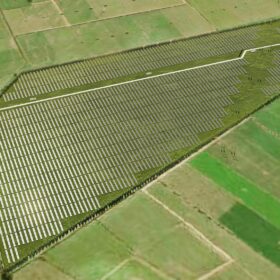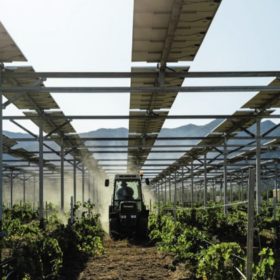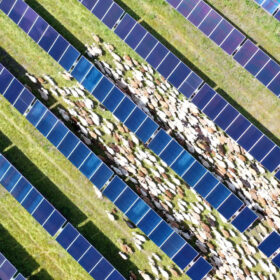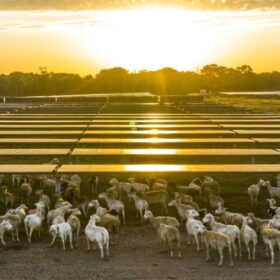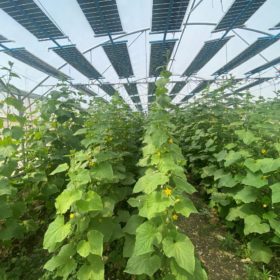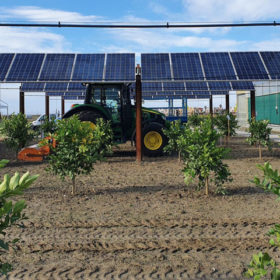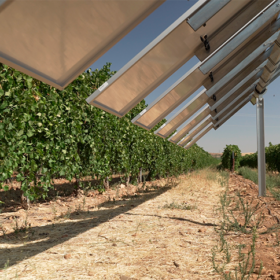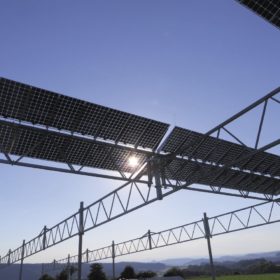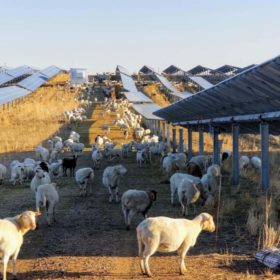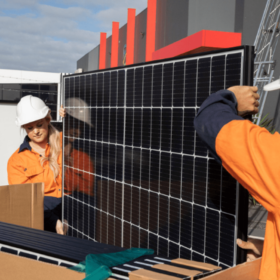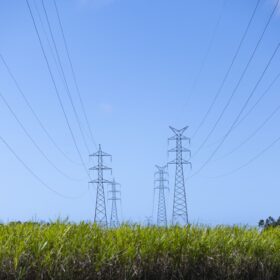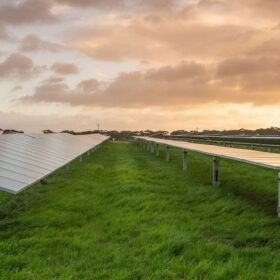New Zealand’s largest utility-scale solar project starts generating power
Lodestone Energy has started generating electricity at its solar farm in Kaitaia, New Zealand’s largest solar farm and first utility scale solar installation to date.
Agrivoltaics and the art of farming under cover
Ground-mounted PV is increasingly being investigated not only as a renewable generator, but as shelter for crops and creatures under fire from climate change. Last week’s All Energy conference handed the mike to some pioneers in the field.
Sheep grazing team to reduce solar mowing costs by more than 44%
About 70 Katahdin breed sheep were dropped off at the Oberlin College campus in Ohio last week. They will graze through mid-June, stomping grass and weeding the solar field in a move aimed at reducing operations and maintenance costs.
Solar grazing methods a centrepiece of inaugural agrivoltaics conference
Dan French, executive producer of the Solar Farm Summit, told pv magazine USA that more than 500 farmers, manufacturers, and community solar developers likely attended the first US agrivoltaics conference in Chicago last week.
New agrivoltaic project to test crop-responsive PV trackers for greenhouses
An international consortium led by Israel’s Al-Zahrawi Society has launched the Regace project to develop agrivoltaic solutions for greenhouses. It will investigate the performance of a new tracking system across locations and climates and use carbon dioxide enrichment to improve crop yield.
Adapting agrivoltaics to different climates, crops
An international consortium led by Italy’s Eurac Research launched the Symbiosyst project to adapt PV modules, mounting structures, and maintenance technologies to the needs of various crops in agrivoltaic installations in different climates.
Semi-transparent agrivoltaic module being developed by UNSW, Tindo
University of New South Wales researchers have teamed up with Tindo Solar to develop a line of semi-transparent modules, specialised for agrivoltaic cropping, which will use nanoparticles tuned to capture different parts of the light spectrum. “There is evidence you don’t need the full spectrum and some plants will work even better if you provide them with only part of the spectrum,” project lead and UNSW Associate Professor Ziv Hameiri tells pv magazine Australia. Crucially, he says, the project will also open a line between farmers, solar researchers and industry, creating the potential for mutual benefits.
Agrivoltaics for vineyards
Developers recently commissioned two different wine-related agrivoltaic projects in Europe.
New method to evaluate performance, LCOE of elevated agrivoltaics
Scientists in Belgium have developed a way to assess elevated agrivoltaic projects, by calculating key performance indicators such as energy yield and levelized cost of energy (LCOE). They have found that shade-tolerant crops such as potatoes could potentially be paired with around 1,290 GW of PV capacity in Europe.
Grazing animals increase carbon sequestration by up to 80% in PV projects
Temple University researchers have found that managed sheep grazing on an acre of recovering agricultural soil with native plants may sequester 1 ton of carbon per year, which could accumulate for 12 to 15 years before reaching saturation.
